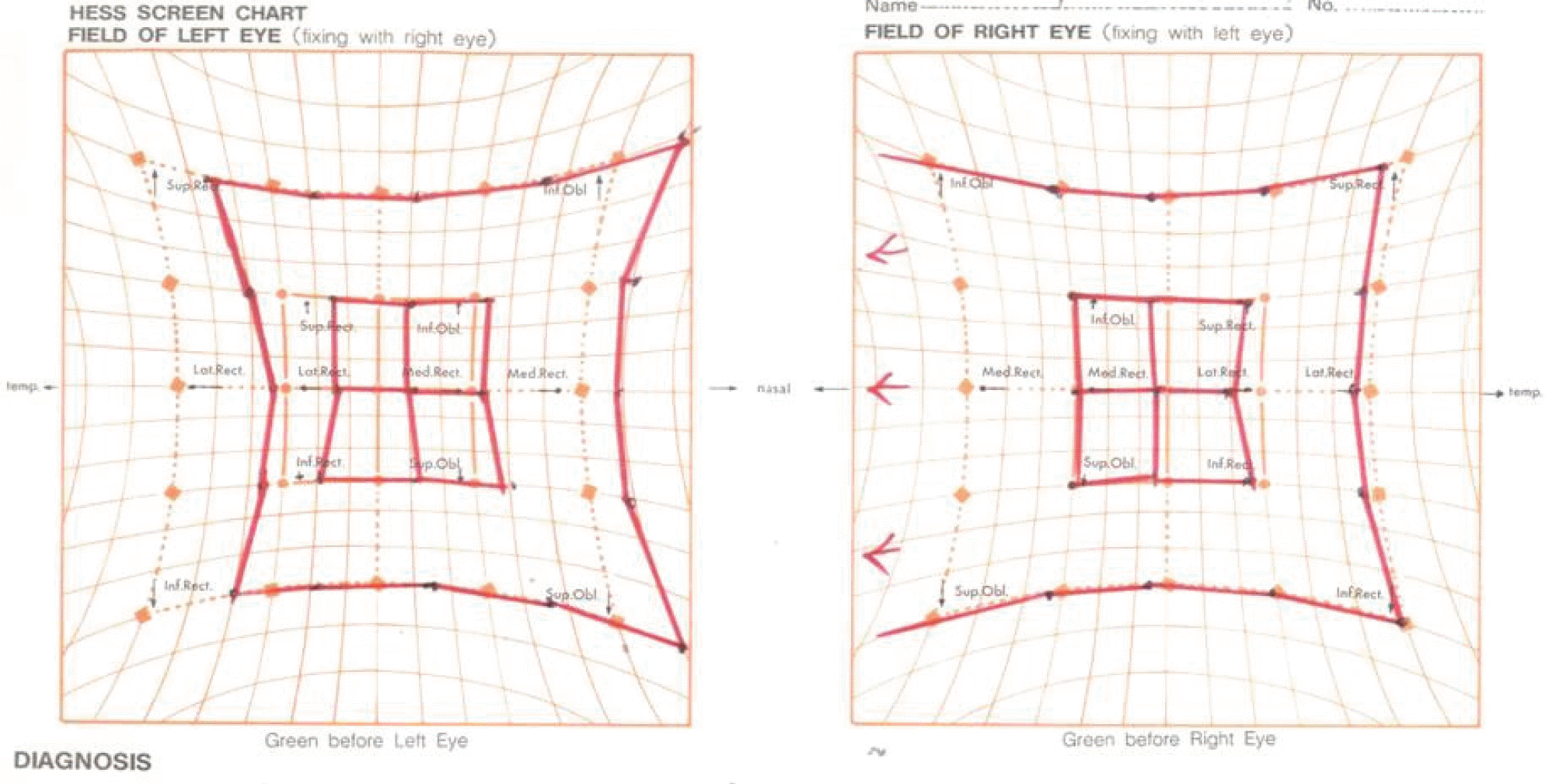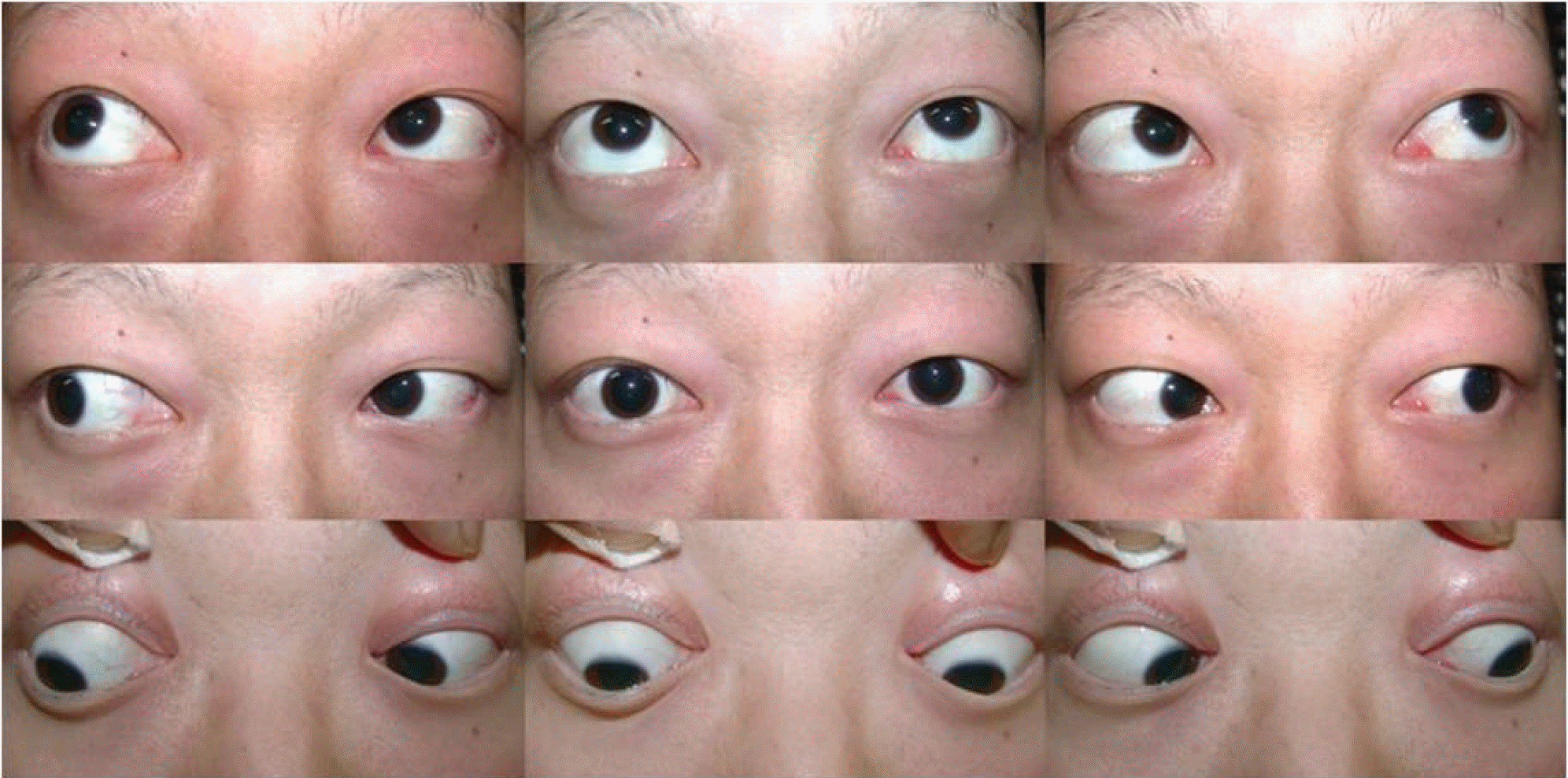Abstract
Purpose
To report two cases of abducens nerve palsy that occurred after the administration of chemotherapeutic agents.
Case summary
(Case 1) A 49-year-old woman with breast cancer presented with acute onset of diplopia 6 weeks after the beginning of combination chemotherapy with cyclophosphamide, doxorubicin, and paclitaxel. She had a left esotropia of 30 prism diopters (PD) with a mild decrease in abduction of the left eye. She was diagnosed with left abducens nerve palsy. (Case 2) A 29-year-old man with non-Hodgkin’s lymphoma presented with diplopia 7 weeks after beginning combination chemotherapy including cyclophosphamide, adriamycin, vincristine, and prednisolone. He had a 20PD esotropia in the primary position with a slight decrease in abduction of both eyes. He was diagnosed with bilateral abducens nerve palsy. The chemotherapy regimen of both patients was changed, and they were followed up without treatment. In case 1, diplopia improved 2 months after change of chemotherapy regimen with complete recovery within 4 months. In case 2, diplopia improved 2 months after a change of chemotherapy regimen with complete recovery within 3 months.
Go to : 
References
1. Albert DM, Wong VG, Henderson ES. Ocular complications of vincristine therapy. Arch Ophthalmol. 1967; 78:709–13.

2. Sandler SG, Tobin W, Henderson ES. Vincristine-induced neuropathy: a clinical study of fifty leukemic patients. Neurology. 1969; 19:367–74.

3. Wheeler DT, Fraunfelder FW. Ocular motility dysfunction associated with chemotherapeutic agents. J AAPOS. 2004; 8:15–7.

4. von Noorden GK. Binocular vision and ocular motility, 5th ed. St. Louis: CV Mosby;1996; 415–22.
5. Rucker CW. The causes of paralysis of the third, fourth, and sixth cranial nerves. Am J Ophthalmol. 1966; 61:1293–8.

6. Patel SV, Mutyala S, Leske DA, et al. Incidence, associations, and evaluation of sixth nerve palsy using a population-based method. Ophthalmology. 2004; 111:369–75.

7. Bradley WG, Lassman LP, Pearce GW, Walton JN. The neuromyopathy of vincristine in man: clinical, electrophysical and pathological studies. J Neurol Sci. 1970; 10:107–31.
10. McCarthy GM, Skilling JR. A prospective cohort study of the orofacial effects of vincristine neurotoxicity. J Oral Pathol Med. 1991; 20:345–9.

11. Whittaker JA, Griffith IP. Recurrent laryngeal nerve paralysis in patients receiving vincristine and vinblastine. Br Med J. 1977; 1:1251–2.

12. Norton S, Stockman JA. Unilateral optic neuropathy following vincristine chemotherapy. J Pediatr Ophthalmol Strabismus. 1979; 16:190–3.

13. Mahajan SL, Ikeda Y, Myers TJ, Baldini MG. Acoustic nerve palsy associated with vincristine therapy. Cancer. 1981; 47:2404–6.
Go to : 




 PDF
PDF ePub
ePub Citation
Citation Print
Print






 XML Download
XML Download